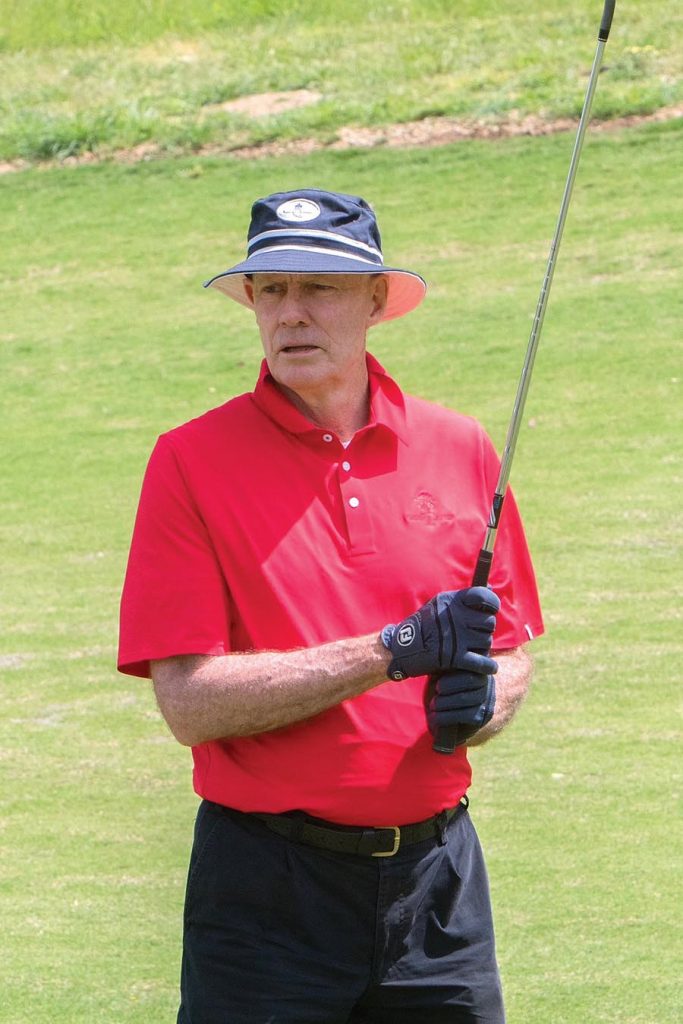THE name Chappell will forever be synonymous with cricket after the stellar careers of brothers Ian, Trevor and Greg.
Beyond their professional cricketing careers, the dedicated work of the Chappell brothers in building the game in Australia, and around the world, is something for the next generation to aspire to.
Former captain Greg Chappell was one of Australia’s all-time best batsmen and, it turns out, he has excelled on the golf course.
He only started to take golf seriously when his cricket career ended and, like many of us, was befuddled by the usual hyper-analysed techniques that golfers seem steadfast in perfecting.
Once he let go of all those technical aspects and applied the simplicity and mental approach gleaned through decades of top-level cricket, his golf flourished, handicap dropped and his enjoyment of the game soared.
With a keen interest in elite sports performance, Greg is often called on for his insights into coaching and the mental side of cricket and the crossover with cricket and golf becomes quite clear.

AC: Greg, did you play golf with your brothers when you were growing up?
GC: No. We had fruit tins in the back lawn for putting contests and things like that, but I actively avoided golf during my cricket career. As a cricketer, we spend all our life on our legs and I couldn’t see the point, on a rest day, of walking for another four hours.
AC: What has been your lowest handicap?
GC: I got to +1 for one round of golf, but in all honesty a one handicap was my lowest playing at Royal Queensland. I was always two good rounds away from playing off scratch.
AC: Is your golf swing similar to your batting stroke?
GC: My golf in the early days was like I was playing golf with a cricket bat. It was all fades and cuts with a lot of lateral movement. It wasn’t until many years later that I realised that golf is a rotational game.
AC: What is the strength of your game?
GC: I’m not a long hitter, but I hit it straight. I got down to a one handicap not by having a lot of birdies and bogeys, but by having a lot of pars.
“My golf in the early days was like I was playing golf with a cricket bat.”
AC: Any memorable golfing moments?
GC: One of my most memorable sporting feats was at the 18th at St Andrews. I drove the green and holed the putt and, what’s more, it took 14 skins off Tony Greig who had been beating me all day so it was even better.
AC: Of the Aussie cricketers, who have you shared a round with?
GC: I played with most of them at some stage or another. While living in Melbourne, I used to play a tournament in the same team with Warnie (Shane Warne) and we were against James Sutherland and Ricky Ponting. It was amusing to me, but it wasn’t amusing to Ricky because he just couldn’t beat Warnie. Ricky would be the best and most consistent of the cricketer/golfers I know and it used to just burn him that he was playing off scratch and Warnie was off 8 or 9 and, by the time the shots were given, he just couldn’t win. Warnie and I beat them one day at Royal Melbourne on the 12th and Ricky was probably one or two-under par.
Warnie just loved it. He was just a great competitor. Again, he was a better golfer than his handicap and always seemed to have a couple more shots than he needed on his handicap. Under pressure, I don’t think I have played with a better non-professional golfer than Warnie.
I can remember a shot at Cathedral Golf Club on the third hole. Ponting had played a great shot to a tight pin behind the bunker and Warnie has about an 8-iron. Any other handicap golfer would have fired at the left side of the green and hoped the ball rolled on to about 20 feet. Warnie stood there, took dead aim and knocked it to about three feet and it was never going anywhere else. I saw him do it time and time again. I don’t know what his routine was, but he just seemed to go inside himself and dial up something, ‘this is what I need’ and that is what he would do. It was fascinating to watch.

AC: Can you describe the crossover with the mental approach with top level cricket and golf?
GC: It’s a process. You develop a routine and mine kept me in the moment. Concentration is nothing more than focusing on what you need to focus on, at the right time. I needed to work the game out in a simple way and needed to turn it into a reactive game rather than a proactive game. I reacted to the bowler my whole life in cricket and I had to find something to react to … and that became the target.
AC: Does it happen in cricket, that sort of paralysis through analysis?
GC: Oh God, every day. Cricket and golf are very similar. I think both are over-coached and, in some cases, there is misguided coaching. Life is an exercise in risk management. I turned my cricket career into one ball. If you could concentrate for one ball you could concentrate for a thousand balls. It is the same with golf, I don’t have to play a full round – it is one shot at a time.
AC: Tell us about playing golf with Richie Benaud.
GC: I played with Richie Benaud a bit and he was a very keen golfer. While he wasn’t overly technically-minded with his cricket, he was highly technical with his golf. I think he over-thought it a bit, didn’t talk much on the course and was very much in a little cocoon. I see it with golfers. They get so obsessed with ‘it (swing) has to look like the pros’.
AC: How would you describe your golf swing?
GC: I worked out with my own golf game that it doesn’t really matter what it looks like, you have what you have, and you would be better off working on bringing the better stuff more often. In cricket, and golf, except for the very highest levels, they do not really teach people about thinking, cultivating and environment that encourages good decision-making. Most golf lessons are only focused on getting you to hit it better. You might hit it well on the range, but can’t take it to the golf course and a lot of that is about thinking, making decisions, risk management, shot selection and which club to use. I tend to watch a lot of women’s golf. I can learn more from them than I can from the men. I can’t overpower it, like the men do and neither can the women so they need to be highly efficient with what they do. What I like about women’s golf is their rhythm.

AC: Who are some of the best golfers you’ve shared a round with?
GC: I played with Greg Norman early in his career at Royal Queensland. He was an amazing ball-striker. The sound off his club-face was different and a lot of people talk about what a ball-striker he was but in those early days, boy, could he putt. I’ve been lucky enough, through mutual friends, to play with Jack Nicklaus, Johnny Miller and Nick Faldo. It’s just amazing to be up close and witnessing the shots they can hit. I got to meet and play golf with Norman von Nida … an Aussie legend. His bunker play was something else – never seen anything like it. He was a very generous man who helped all of the younger Australians. A pioneer.
AC: Are there any charities you are passionate about?
GC: The Chappell Foundation is close to my heart. We support seven frontline charities that work with youth homelessness. It is a disgrace in a country as wealthy as our that we have about 100,000 people who don’t have a place to call home and around 40,000 of them who sleep rough, every night. That was inspired by being in Fitzroy gardens in the middle of winter and seeing these poor people almost freezing to death. The Chappell Foundation puts on a charity golf day each year at NSW Golf Club.




![Win the golfing experience of a lifetime, at the Hawai‘i International Week of Golf, valued at $6,900 [Winner Announced] Win the golfing experience of a lifetime, at the Hawai‘i International Week of Golf, valued at $6,900 [Winner Announced]](https://www.insidegolf.com.au/wp-content/uploads/Hawaii-Comp-500x294.jpg)